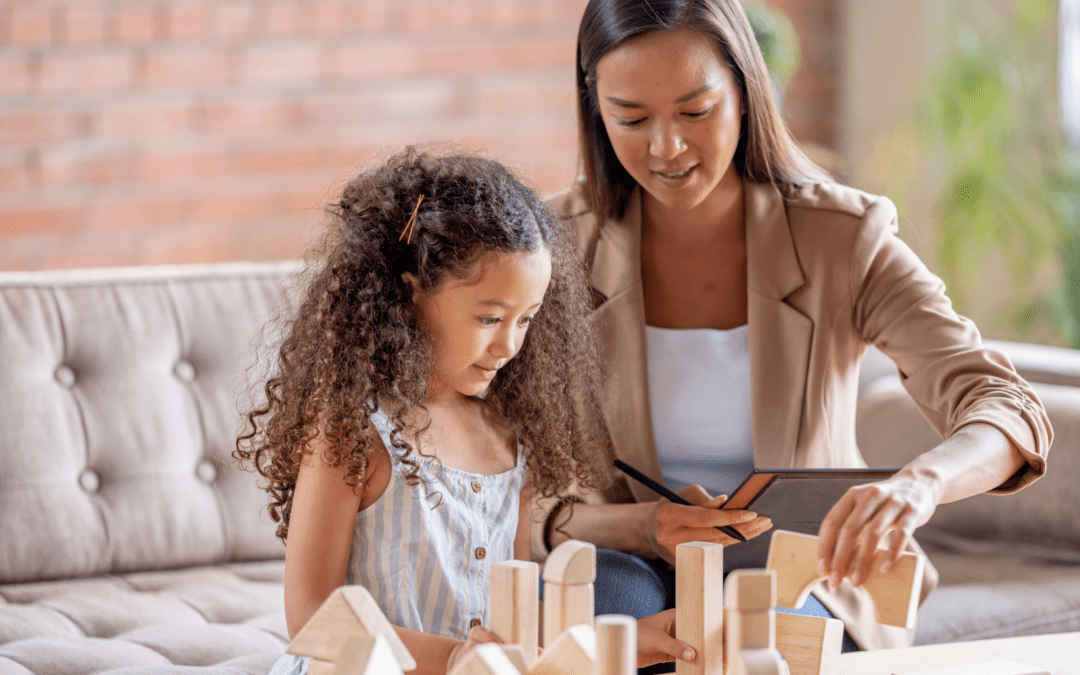Let’s be real: kids aren’t exactly known for sitting down and saying, “I’m feeling emotionally dysregulated due to recent life changes and could use some support.” Nope. Kids process their world through something else entirely—play.
That’s why play therapy for kids is such a powerful tool.
It takes the natural language of children—imagination, storytelling, pretend games, art, movement—and uses it as a bridge to healing. Play is how kids explore their feelings, make sense of what’s happening around them, and find safety in their ever-changing little worlds.
So if you’ve ever wondered how building with blocks, acting out a family with dolls, or drawing endless rainbows could possibly help a child work through anxiety, trauma, or big feelings… pull up a chair.
Let’s dive into the heart of play therapy for kids—what it is, how it works, and why it’s one of the most beautiful and effective ways to support children on their emotional journey.
What Does Play Therapy Do for Children?
At its core, play therapy for kids gives children a safe space to express feelings they might not be able to articulate with words. Because let’s face it: sitting face-to-face and talking about emotions like an adult doesn’t always work for a 6-year-old who’s still learning what those emotions are.
Play therapy allows kids to:
- Express difficult emotions (anger, fear, sadness) without needing to say them out loud
- Reenact past experiences and process trauma in a way that feels safe
- Build self-esteem and confidence through success in the play space
- Develop problem-solving and social skills
- Feel seen, understood, and supported by a therapist who meets them where they are
Through toys, art, sand trays, puppets, and movement, children get to “talk” in a language that makes sense to them. A skilled play therapist doesn’t just watch—they observe themes, track emotional cues, and gently guide the child toward healing, regulation, and understanding.
Play therapy for kids isn’t just fun and games—it’s structured, intentional, and deeply therapeutic.
What Is the Best Age for Play Therapy?
While play therapy is often associated with younger kids, it can actually benefit a pretty wide age range. Typically, play therapy for kids is best suited for children between the ages of 3 to 12.
Here’s a rough breakdown:
- Ages 3–6: This is where play is the most natural mode of communication. These little ones may not yet have the vocabulary to name their feelings, but they show everything through how they play. Play therapy is especially helpful at this age for managing tantrums, attachment issues, and early signs of anxiety or trauma.
- Ages 7–12: While older kids may be more verbal, many still feel safer expressing their experiences through creative and symbolic play. As school, peer dynamics, and identity development start taking center stage, play therapy for kids offers a crucial outlet for emotional exploration and resilience-building.
- Teens & Beyond: Some elements of play therapy—like art, role play, or sand tray work—can be adapted for adolescents and even adults, though traditional talk therapy might become more central as verbal skills increase.
Basically, if a child is still naturally drawn to toys, stories, art, or pretend play, play therapy for kids can meet them right where they are.
What Are the 5 Stages of Play Therapy?
Just like any meaningful process, play therapy for kids unfolds over time—and it often follows five general stages. These stages help therapists understand where a child is in their healing journey and guide how the sessions evolve.
1. Warm-Up / Relationship Building
In the early sessions, the goal is safety. The child and therapist get to know each other, explore the room, and begin building trust. It’s gentle, non-directive, and full of freedom. This stage is crucial—kids need to know this is a safe space with no pressure to “perform.”
2. Testing for Safety and Boundaries
Once trust is established, the child may begin testing limits—knocking things over, pushing boundaries, or acting out roles that challenge authority. This isn’t misbehavior—it’s how children check, “Are you really safe? Can I be all of me here?”
3. Working Through Themes
Here’s where the magic happens. As trust grows, children begin reenacting deeper emotions and experiences. They may process trauma, grief, or fear symbolically. The therapist gently reflects, validates, and supports their journey toward insight and emotional regulation.
4. Growth and Change
With consistent support, kids begin to show more confidence, regulation, and creativity in play. Themes shift. Their stories reflect more resolution, hope, and empowerment. The real-life changes outside the therapy room often start here.
5. Closure
As therapy winds down, the focus turns to saying goodbye in a healthy, supported way. The therapist may review themes from the sessions, reflect on growth, and celebrate the child’s progress. A planned ending helps reinforce trust and closure.
Every child moves through these stages at their own pace—and sometimes they circle back before moving forward. That’s totally okay. Healing isn’t linear, especially for little ones.
What Are the Four Types of Play Therapy?
There are many approaches to play therapy for kids, but here are four common types that therapists may use depending on the child’s needs and personality:
1. Non-Directive (Child-Centered) Play Therapy
In this approach, the child leads the session and chooses how they want to play. The therapist offers unconditional acceptance, reflective listening, and a safe, structured environment. This type of therapy trusts the child’s inner wisdom to guide their healing.
2. Directive Play Therapy
Here, the therapist takes a more active role—introducing specific activities, themes, or questions based on the child’s needs. This can be especially helpful for children working through trauma or specific behavior patterns.
3. Cognitive Behavioral Play Therapy (CBPT)
CBPT integrates CBT techniques into play. Through games, role-playing, or storytelling, the therapist helps the child identify unhelpful thoughts, build coping skills, and develop emotional awareness.
4. Sand Tray Therapy
Using a small sandbox and miniature figures, children create worlds that express their inner thoughts, fears, and hopes. This powerful, symbolic type of play therapy for kids helps externalize internal conflicts and gives them a voice.
Therapists may blend techniques based on the child’s age, emotional development, and the issues being addressed. There’s no one-size-fits-all here—just attuned care and creative connection.
Final Thoughts: Kids Don’t Say “I’m Struggling”—They Show It Through Play
If your child is acting out, withdrawing, having trouble sleeping, or seems stuck in big feelings they can’t explain… play therapy might be the space they didn’t know they needed.
Play therapy for kids gives children the freedom to express what’s too big, too confusing, or too painful to say out loud. It meets them in their natural world of imagination, creativity, and movement—and gently leads them toward healing.
Because underneath every meltdown, every quiet sadness, and every “I don’t want to talk about it” is a child who wants to feel safe, seen, and understood.
Play helps make that happen. And when they’re ready, healing begins—not with words, but with blocks, stories, puppets, and paint.
And that, truly, is the power of play.
Get Started
You may call, text message, email, or fill out the form to reach us. We will respond within 48 hours, Monday through Friday.
We Will Help You Find Your Fit
We know that looking for a counselor can feel overwhelming.
We are here to help guide you to the counselor that is best for your needs. If that counselor turns out to
not be in our practice, that's okay. We know great counselors that we'd be happy to refer you to.
What’s most important to us is that you get connected with the help you need. We are here for you.

